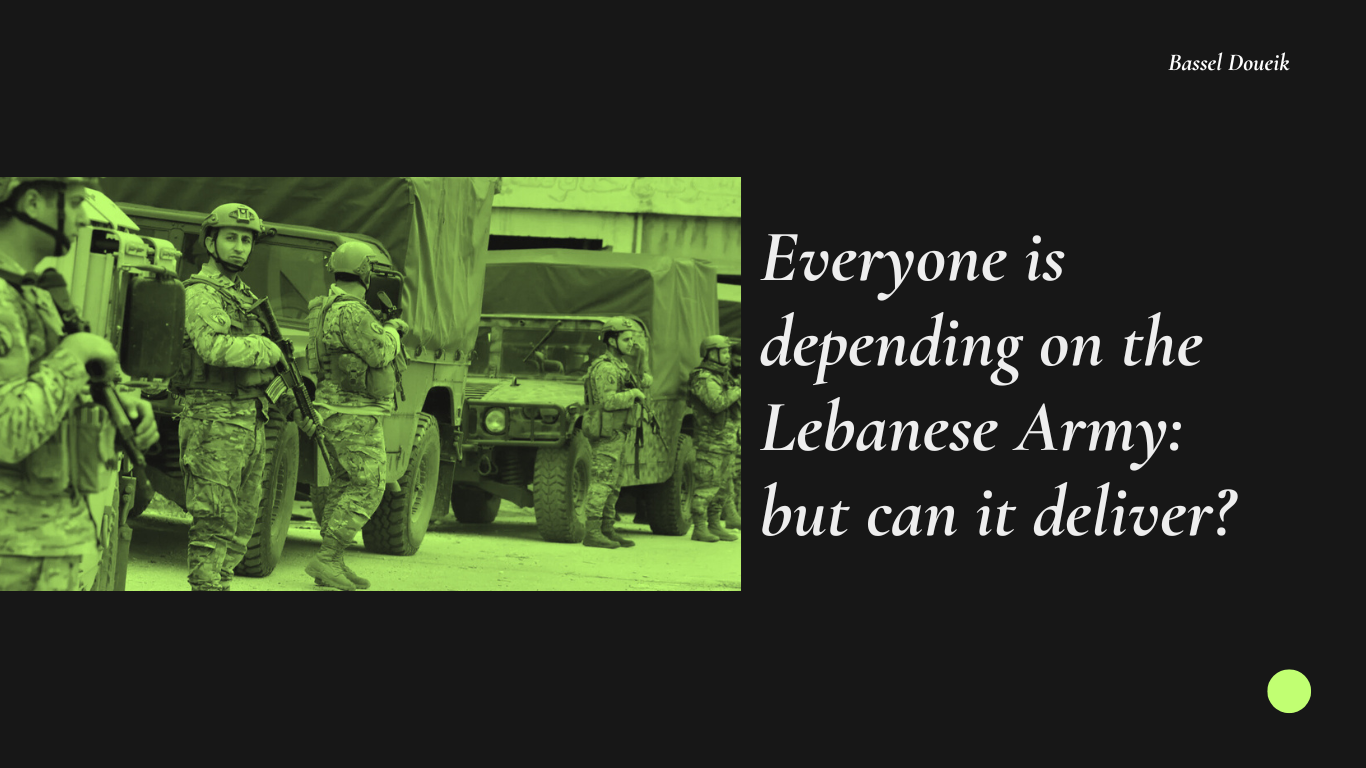


Everyone is depending on the Lebanese Army, but can it deliver?
August 25, 2025
A-
A+
Inside the LAF’s barracks: what military technology and equipment lies within? With ongoing developments in Lebanon, from persistent Israeli occupation to the Lebanese government’s push to disarm Hezbollah, one organization enjoys broad public support: the Lebanese Army. Tasked with almost every aspect of national security, the LAF intervenes in armed clashes, mediates brawls, conducts raids against drug smugglers, and expands its presence in southern Lebanon in line with UN Resolution 1701. The army shoulders enormous responsibility across the country, but can it succeed?
Snapshot: What you need to know about the LAF
The Lebanese Army was largely built by foreign donors to focus on territorial security, counter-terrorism/counter-insurgency, and border control. It was never intended for high-end conventional warfare. The U.S. is the LAF’s primary donor, though the “Qualitative Military Edge” policy restricts transfers of systems that could threaten the Israeli Defense Forces.
Resourcing Reality
Since Lebanon’s financial collapse in 2019, pay, readiness, and sustainment have been the LAF’s binding constraints. With a broken economy and a corrupt government, the army has relied on temporary cash stipends from the U.S. (via UNDP) and Qatar, alongside donations of food, fuel, and vehicles, to remain operational.
Core Capabilities of the LAF
Ground Forces: The army relies on a small fleet of M60A3 tanks alongside older T-54/55 models, 32 M2A2 Bradley IFVs, thousands of M113 armored personnel carriers, and large numbers of HMMWVs that form the backbone of mobility. These assets are sufficient for internal security tasks but are outdated compared to peer militaries. Since 2015, the LAF has received M198 155mm towed howitzers and large stocks of artillery and mortar ammunition. However, its indirect fire capability remains limited due to a lack of self-propelled systems and precision-guided munitions.
Air Force: The LAF’s air capabilities are limited. Its fleet includes six A-29B Super Tucano aircraft and a small number of AC/RC-208 Caravan variants, providing day-and-night precision-guided strike and intelligence, reconnaissance, and surveillance (ISR) capacity. These assets are useful for counter-terrorism and limited close air support but are insufficient for air superiority. The army’s helicopter fleet consists of UH-1H Huey IIs, SA-330 Pumas, AB-212s, and MD-530F+ light attack helicopters, the latter delivered in 2021. Complementing these are small tactical unmanned aerial systems such as Raven and ScanEagle, supporting border and maritime ISR.
Navy Fleet: The Lebanese Navy functions primarily as a coastal security force. It operates patrol craft and inflatable boats for search and rescue operations, as well as monitoring territorial waters. However, it lacks area air-defense systems and anti-ship strike capabilities.
Urgent Gaps to be Prioritized
The most pressing gaps are human. Despite temporary stipends from the U.S. and Qatar, these stopgap measures cannot substitute for long-term financial stability. Morale is strained by shortages of basic supplies such as food, fuel, and medical care, eroding operational readiness. To realistically safeguard Lebanon and contain regional spillover, the LAF must strengthen human resilience and defensive capabilities rather than chase parity with the Israeli military. Reliable salary support and benefits are critical to retain skilled officers and soldiers, prevent desertion, and preserve morale.
Equally critical is reinforcing logistics and sustainment, including steady access to fuel, spare parts, and properly equipped maintenance depots to keep existing systems operational. On the equipment side, the army’s priority should be defensive: short-range air defense and counter-drone systems to protect troops and bases, complemented by counter-battery radars, precision-guided mortars and artillery, and mobile shoot-and-scoot platforms to survive and respond to modern firepower. The LAF also requires expanded ISR and communications capacity through drones, aerostats, and resilient satellite networks. For ground mobility, modern MRAPs and better-armored APCs are needed to protect troops in asymmetric environments.
Read More
-
Phantom Deals: The Shell Companies Winning Syria’s Billion-Dollar Projects
-
Destruction and siege drive As-Sweida into a deepening humanitarian crisis
-
Is the Iranian regime in threat of collapse due to its economic challenges?
-
Tamara el-Zein: From Science Champion to Minister of the Environment
-
After Graham’s Beirut Visit: Tel Aviv Watches More Closely
